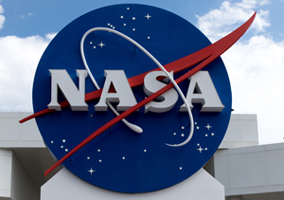NASA Issues New FAR Supplement Requirements for Counterfeit Avoidance
NASA
ERAI, Inc.

NASA Issues New FAR Supplement Requirements for Counterfeit Avoidance
On August 27, 2020, NASA published the final rule of the NASA Federal Acquisition Regulation (FAR) Supplement: Detection and Avoidance of Counterfeit Parts (NFS Case 2017-N010). The objective of the rule is to implement section 823 of the NASA Transition Authorization Act of 2017 which required NASA to revise the NASA Supplement to the Federal Acquisition Regulation to, “improve the detection and avoidance of counterfeit electronic parts in the supply chain.” The new regulation went into effect on September 28, 2020. The rule applies to covered contractors and is intended to be flowed down to their subcontractors. Covered contractors are defined as, "by Public Law 115–10 are contractors, including small entities, that supply an electronic part, or a product that contains an electronic part to NASA" and will apply to all classes of small business.
For parts currently in production, the rule means that the government, its contractors, and subcontractors at all tiers are required to purchase parts, including those contained in an assembly, from three sources:
- the original component manufacturer of the part
- an OCM-authorized supplier (including aftermarket manufacturers with contractual agreements or authority from the OCM) or
- suppliers who "obtain such parts exclusively from the original manufacturers of the parts or their authorized dealers."
For parts not currently in production, the parts must be purchased from a NASA-identified or contractor-approved supplier. The contractor then assumes responsibility for the authenticity of the parts, is required to perform inspection, testing and authentication of the parts, and is to obtain traceability information and provide it to the contracting officer upon request. Selection of a contractor-approved supplier is subject to review and audit by the contracting officer.
Although the rule does not include a GIDEP reporting requirement, a requirement is included to notify the contracting officer within 30 calendar days after the date when the contractor, "becomes aware, or has reason to suspect, that any end item, component, part or material contained in supplies purchased by NASA, or purchased by a covered contractor or subcontractor for delivery to, or on behalf of, NASA, contains a counterfeit electronic part or suspect counterfeit electronic part."
Additionally, the rule establishes that costs related to suspect counterfeit and counterfeit parts and corrective action or costs of rework are unallowable unless the following criteria are met: the covered contractor has a counterfeit parts detection and avoidance system that has been reviewed and approved by NASA; the covered contractor, including a subcontractor, notifies the contracting officer in writing of the discovery of the suspect/counterfeit part within 30 days; or the suspect/counterfeit parts were provided to the contractor as Government property in accordance with part 45 of the FAR.
On September 24, 2020, Anthony Rogers, procurement Quality Assurance lead at Armstrong Flight Research Center, discussed the new regulation supplement, including the timeline for implementation, definitions, and what the relationship between NASA and its supplier partners looks like moving forward for electronic parts procurement.
According to Rogers, there are some key difference between the DFARS and the NASA FAR Supplement (NFS).
First, the definition of electronic part varies. The NFS defines an electronic part as, "a discrete electronic component, including a microcircuit, transistor, capacitor, resistor or diode, that is intended for use in a safety or mission critical application". This NFS definition is similar to the DoD definition; however, the scope is narrowed by the addition of the safety or mission critical requirement.
Second, according to Rogers, the DFARS requires contractors to have a counterfeit electronic part detection and avoidance system; however, the NFS does not require the covered contractor to have a counterfeit detection and avoidance system to do business with NASA but it is a requirement for cost considerations for the inclusion of suspect/counterfeit parts and any corrective actions associated with it.
Third, if a contractor provides counterfeit parts and corrective action is necessary, unlike the DFARS, the NFS requires an adequate corrective action strategy to prevent another counterfeit escape.
Fourth, there is a minor difference in notification if a contractor or its subcontractors becomes aware that a counterfeit part was supplied to NASA. The NFS has a specific 30-day notification requirement, while the DFARS does not set a timeframe.
Lastly, the NFS rule does not include a GIDEP reporting requirement for the contractor in the event that a counterfeit part is discovered; DFARS Section 252.246-7007 does have a GIDEP reporting requirement. However, recent changes to the FAR do cover notification to GIDEP.
All organizations supplying product to NASA and/or their contractors are encouraged to review the final rule to ensure your company and products meet the latest NASA requirements.
Watch the video: https://nsc.nasa.gov/events/detail/new-nasa-far-supplement-requirements-for-counterfeit-avoidance
Read the regulation: https://www.federalregister.gov/documents/2020/08/27/2020-16986/nasa-federal-acquisition-regulation-supplement-detection-and-avoidance-of-counterfeit-parts-nfs-case
SEE MORE BLOG ENTRIES
|